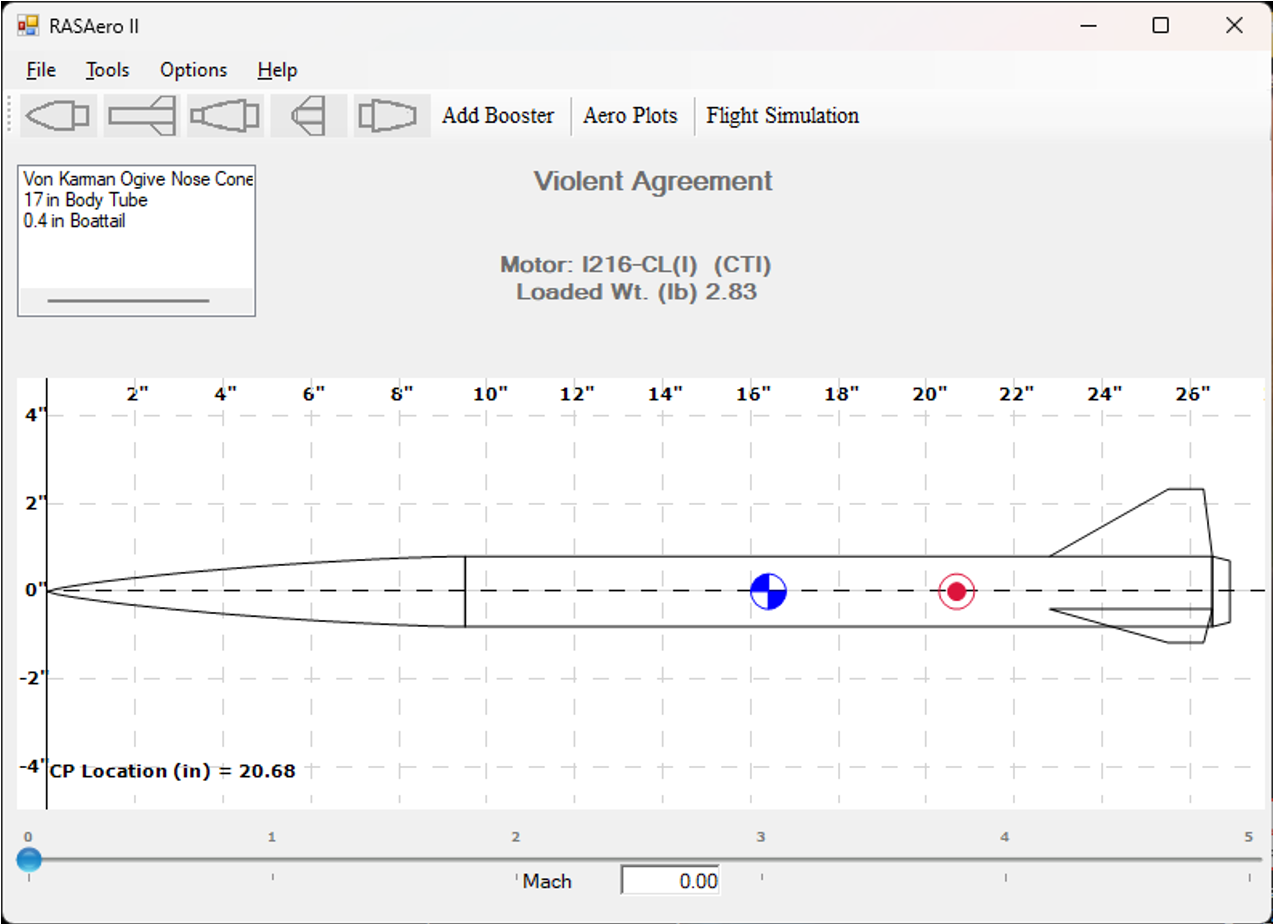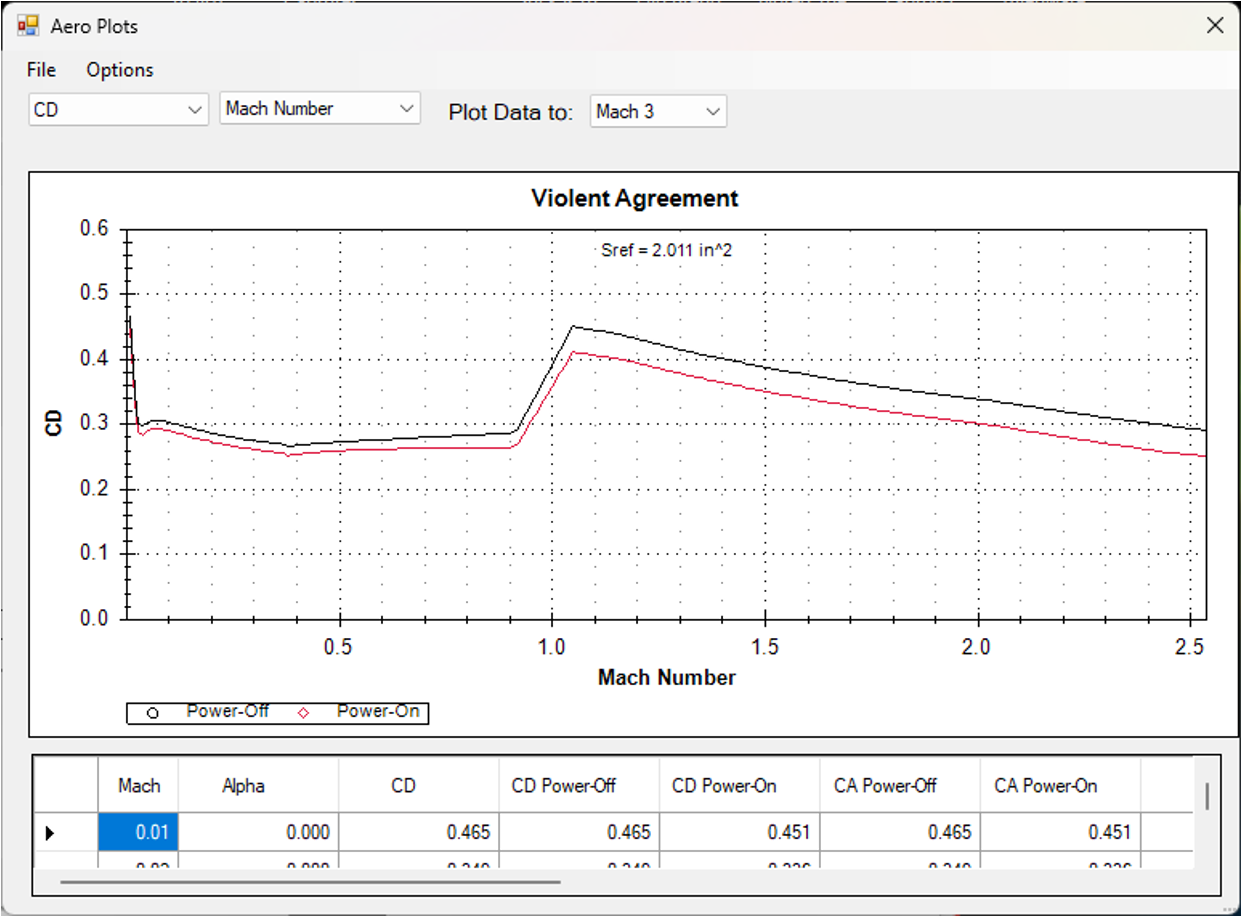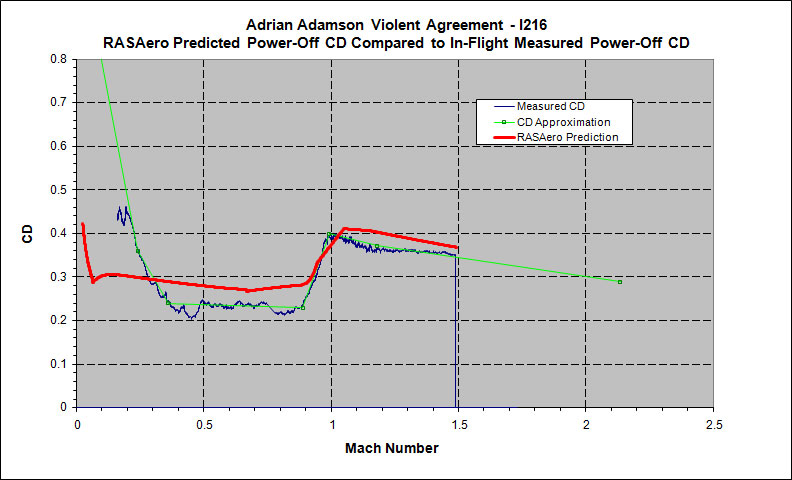
Presented below is a comparison of the RASAero II predicted power-off drag coefficient (CD) and in-flight measured power-off CD for the Adrian Adamson Violent Agreement rocket flown on an I216 rocket motor. The rocket was flown with a Featherweight Altimeters Raven altimeter. The rocket CD was measured during the coast phase of the flight based on the on-board measured axial acceleration and the burnout mass of the rocket.



The RASAero II predicted power-off CD shows fairly good agreement with the in-flight measured power-off CD for mid to high subsonic Mach numbers, and good agreement with the in-flight measured power-off CD for transonic and supersonic Mach numbers up to Mach 1.5.
The RASAero II aerodynamic prediction for the Violent Agreement rocket was run with the main input screen All Turbulent Flow Box Not Checked, i.e., the normal default laminar flow - transition to turbulent flow - turbulent flow option for the skin friction calculations.
The RASAero II flight simulation predicted altitude was 18,784 ft, an error of only 1.56% compared to the 18,495 ft apogee altitude from the onboard barometric altimeter, which was adjusted for balloon-referenced atmospheric pressure data from a balloon launched prior to the flight to arrive at the final in-flight measured apogee altitude.
Special thanks to Adrian Adamson from Featherweight Electronics for providing the flight data and the rocket data for this rocket.